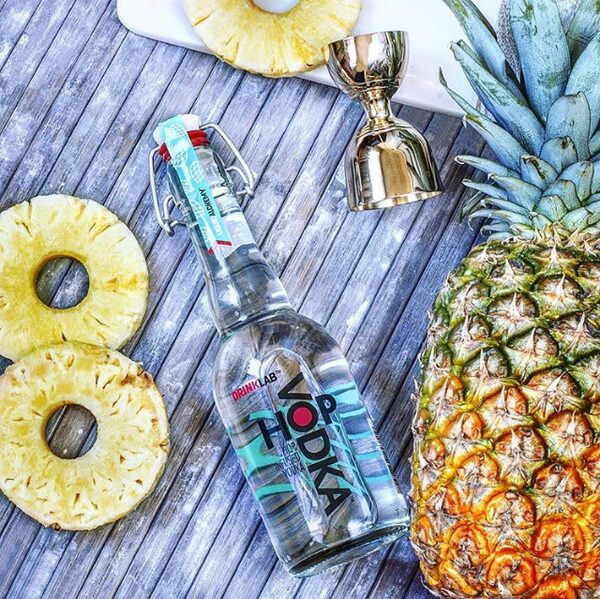
Kinsip's Woodland's Whisper Pine Vodka is a foresty spirit that has developed a cult following.Jeremiah Soucie/Handout
Whether it’s pink, blue, yellow, aged or just plain old London Dry, our collective thirst for gin shows no sign of slowing down. One of the driving factors in the gin boom is the category’s many different faces. Like craft beer fans, gin drinkers are always psyched to try the bold and diverse flavour profiles of new releases and experimental expressions, be they new world or old. They might come for the juniper, but they stay for the hand-foraged chanterelles, spruce tips and sea kelp.
This trend has not gone unnoticed by vodka producers, who are now answering back with “botanical spirits” – vodka infused with botanicals such as cucumber, mint, cardamom, orange blossom, pine needles, rosemary and hops. Although bartenders for some time have been declaring the reign of colour-free, tasteless, odourless vodka over, the appearance of a clutch of new botanical vodkas, from both craft producers and Big Liquor, suggests that vodka is finally poised to reinvent itself.
“I feel like traditional vodka is definitely not having a renaissance,” says Jeremiah Soucie, co-owner of Prince Edward County’s Kinsip House of Fine Spirits. “When we get orders for vodka sodas, I always ask if it’s because they want no- or low-sugar and that’s usually the case – not because they love vodka-soda. Once we offer to add botanical bitters and herbs to liven it up, they love it. There’s definitely a tendency towards more interesting flavours.”
At Kinsip, Soucie is working toward developing non-gin botanical spirits to add to the distillery’s Woodland’s Whisper Pine Vodka, an esoteric and foresty spirit the founding partners had considered discontinuing until they realized it was developing a cult following. Soucie says that in addition to the crowd-pleasers, it’s important to have a polarizing spirit or two in any portfolio to appeal to adventurous eaters and drinkers.
At least a few botanical vodkas have potential to become polarizing for a range of reasons, starting with the fact that people have to get used to the idea of an entirely new category. For example, Absolut Extrakt, a cardamom-infused vodka, was turned down by at least one liquor board in Canada for being too far outside the box. Ketel One was more successful with its line of “Botanicals,” which come in three expressions – cucumber-mint, peach-orange blossom and grapefruit-rose.
Since bartenders can generally do their own infusions (even in Alberta, where it was illegal for years), these spirits are aimed at consumers more than cocktail makers. Ketel One is quite aggressively going after the wellness-conscious market, with the entire line being low-ABV (30 per cent, as opposed to the standard 40) and, unlike Absolut Extrakt, totally sugar-free. As to taste, Ketel One’s fruity and floral peach flavour is a little aggressive, but the other two are fresh tasting and could easily stand in for gin with a little added soda or tonic.
The cucumber-mint version, in particular, has a pleasant, zesty garden flavour, eerily reminiscent of Hendrick’s gin, the product that, arguably, started the gin craze 20 years ago. Much of its success is owed to its ability to convert vodka drinkers over to gin, thanks to both marketing based around a gorgeous steampunk-inspired brand and the fact that it toned down the juniper and dialled up other botanicals, notably rose petal and cucumber.
Where Hendrick’s went, thousands of producers followed, some even toning down the juniper to the point that, in some, expressions, it’s barely discernible. And, since juniper is one of gin’s defining features, arguably, there’s little separating those gins from being a “botanical vodka,” since both start with neutral grain spirit. After the categories start to erode, what it gets labelled after that probably has more to do with marketing than category definitions.

Hop Vodka grew out of Brock Shepherd and Dimitri van Kampen's experience with beer.Handout
“In this day and age, fewer people cater to that puritanical side that says gin has to contain juniper,” says Brock Shepherd, who makes Hop Vodka, which promises to “bring vodka and gin drinkers together” in Toronto. “The lines are very blurred, since there’s a whole new world that says, ‘Why not try this just because it tastes good?’”
Shepherd and his partner Dimitri van Kampen weren’t actually thinking of gin when they came up with this botanical spirit, which grew out of their experience with beer. It was only after they made their botanical vodka, made entirely with hops, that they realized it would appeal to gin drinkers.
Ketel One’s botanical line, on the other hand, looks like it’s going after the gin market by design – and trying to convert some gin-drinkers back to vodka. Turnabout is fair play, right? And, while we’re going to have to wait a few years to see if this strategy works, there’s one prediction that’s safe to make – namely, that the lines are only going to get blurrier as people play around with the space in between categories.
Live your best. We have a daily Life & Arts newsletter, providing you with our latest stories on health, travel, food and culture. Sign up today.